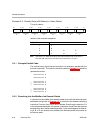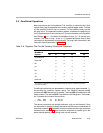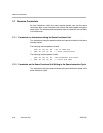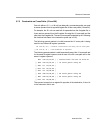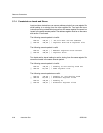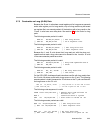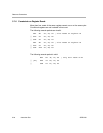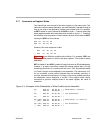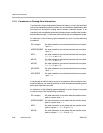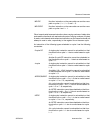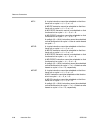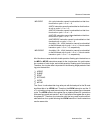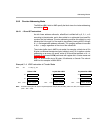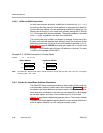
Resource Constraints
3-25Instruction SetSPRU733
3.7.7 Constraints on Register Writes
Two instructions cannot write to the same register on the same cycle. Two
instructions with the same destination can be scheduled in parallel as long as
they do not write to the destination register on the same cycle. For example,
an MPY issued on cycle i followed by an ADD on cycle i + 1 cannot write to the
same register because both instructions write a result on cycle i + 1. Therefore,
the following code sequence is invalid unless a branch occurs after the MPY,
causing the ADD not to be issued.
MPY .M1 A0, A1, A2
ADD .L1 A4, A5, A2
However, this code sequence is valid:
MPY .M1 A0, A1, A2
|| ADD .L1 A4, A5, A2
Figure 3−4 shows different multiple-write conflicts. For example, ADD and
SUB in execute packet L1 write to the same register. This conflict is easily
detectable.
MPY in packet L2 and ADD in packet L3 might both write to B2 simultaneously;
however, if a branch instruction causes the execute packet after L2 to be
something other than L3, a conflict would not occur. Thus, the potential conflict
in L2 and L3 might not be detected by the assembler. The instructions in L4
do not constitute a write conflict because they are mutually exclusive. In
contrast, because the instructions in L5 may or may not be mutually exclusive,
the assembler cannot determine a conflict. If the pipeline does receive
commands to perform multiple writes to the same register, the result is
undefined.
Figure 3−4. Examples of the Detectability of Write Conflicts by the Assembler
L1: ADD.L2 B5,B6,B7 ; \ detectable, conflict
|| SUB.S2 B8,B9,B7 ; /
L2: MPY.M2 B0,B1,B2 ; \ not detectable
L3: ADD.L2 B3,B4,B2 ; /
L4:[!B0] ADD.L2 B5,B6,B7 ; \ detectable, no conflict
|| [B0] SUB.S2 B8,B9,B7 ; /
L5:[!B1] ADD.L2 B5,B6,B7 ; \ not detectable
|| [B0] SUB.S2 B8,B9,B7 ; /




